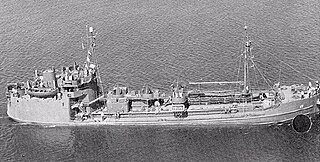Aqueity was the name of a number of ships operated by F T Everard, including:
Aqueity was the name of a number of ships operated by F T Everard, including:

Macedonia most commonly refers to:
A number of Motor Vessels have been named MV Aurora, including -
Aqueity was an 890 GRT coastal tanker which was built by A & J Inglis Ltd, Glasgow in 1945 for the Ministry of War Transport (MoWT) as Empire Belgrave. In 1947 she was sold to F T Everard and Sons and renamed Aqueity, being lost later that year when she struck a mine and sank off the coast of the Netherlands.
A number of motor vessels have been named Ulysses:
A number of ships have been named Arcadia.
Various motor vessels have had the name Juno, including:
A number of motor vessels have been named Explorer, including -
A number of motor vessels have been named Jupiter, including
Monchegorsk has been a name of the following vessels:
Two motor ships have borne the name Polarbjørn:
Several naval ships were named Helgoland after the island of Heligoland or the Battle of Helgoland, an action during the Second Schleswig War.
Seven motor vessels of Stena Line have carried the name Stena Nordica.

The T1 tanker or T1 are a class of sea worthy small tanker ships used to transport fuel oil before and during World War II, Korean War and Vietnam War. The T1 tanker classification is still in use today. T1 tankers are about 200 to 250 feet in length and are able to sustain a top speed of about 12 knots. The hull designation AO is used by the US Navy to denote the ship is a T1 oil tanker and AOG that the T1 is a gasoline tanker. The small size allows the T1 to enter just about any sea port or to anchor around a small island, this was very useful during the Pacific War. The T1 tanker can carry about 48,000 to 280,000 bbls. Some T1 tankers were used to transport goods other than oil, a few were used for black oil-crude oil, diesel, chemicals and rarely bulk cargo like grain. T1 tankers are also called liquid cargo carriers. The T1 tanker has about a 6,000 to 35,000 deadweight tonnage (DWT) of cargo. The small size also gives the ships short turn around time for repair, cleaning, loading and unloading. A T1 tanker carrying dirty cargo, like crude oil needs a few weeks of labor to clean before carrying clean cargo. Most T1 ships during World War II were named after major oil fields. T1 tankers are operated by the US Navy, War Shipping Administration and United States Maritime Commission. Some T1s were loaned to England in the Lend-Lease program for World War II, after the war most were returned to the US. After World War II many of the T1 ships were sold to for civilian use. Each T1 had emergency life rafts on the boat deck. The ships had cargo booms and piping to load and unload fuel. During war time the T1 are armed for protection with deck guns. A typical ship may have one single 3"/50 dual purpose gun, two 40 mm guns and three single Oerlikon 20 mm cannon. A T1 at war time normally had a crew of 38 and up to 130. If operating as a United States Merchant Marine ship, the crew would be a mix of civilian Merchant Marines and United States Navy Armed Guards to man the guns.
A number of motor vessels have been named Glen Sannox, including
A number of motor vessels have been named Claymore, including
A number of vessels have been named Armorique, including:
A number of motor vessels have been named MV Balmoral, including: